A Collapsed Sinkhole in Rome Reveals A Hidden City
The Roman Empire used to be the largest in the civilized world. Now, the city of Rome seems to be the only surviving haven of unadulterated Roman artifacts.
Recently, a sinkhole collapsed in the middle of present-day Rome. Everyone was surprised to learn of the historical treasures that were unearthed. What could modern Rome possibly have to teach us about ancient Roman culture?
A Sinkhole Neighboring a Historical Site
Tourists visiting Rome will surely make the most of their time by visiting the historic sites. Top on the list are the Colosseum and the all too artistic Pantheon.

Source: PxHere
The sinkhole in question suddenly emerged at Rome’s Piazza Della Rotonda, right in front of the iconic Pantheon. And while sinkholes tend to be undesirable occurrences, this one has allowed us to learn some interesting facts about ancient Roman culture.
Sinkholes Are Common Sight in Rome
Occupants of Rome have gotten used to finding a sinkhole in a place where there was none the day before.

Source: Wikimedia Commons
So, if you’re visiting Rome, keep this in mind. For example, a road you drove over the night before may have caved in by morning. The age of the city, the many tunnels, catacombs, and quarries are culprits of the sinkholes that litter Rome.
As Much As 100 Reported Sinkholes Per Year
As many as 100 sinkholes are reported in Rome yearly. That brings the figure to an average of two sinkholes every week.
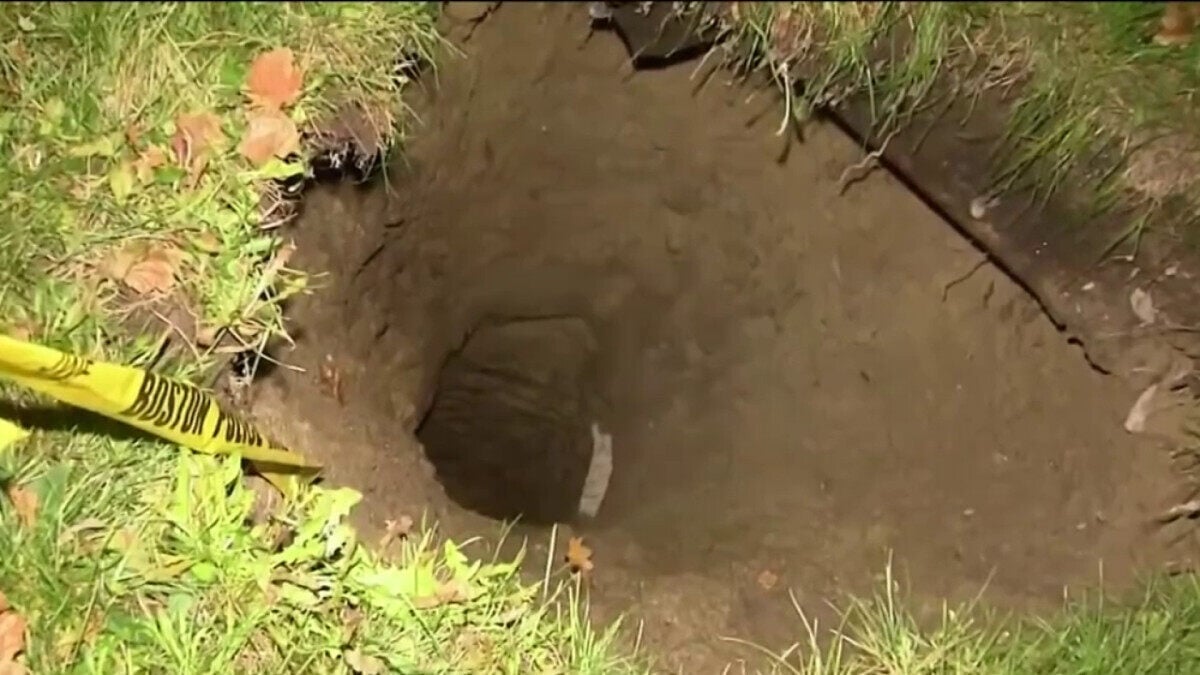
Source: Twitter
Archaeologists show up each time a sinkhole appears somewhere in Rome. It’s almost as if these experts in ancient Roman culture anticipate the manifestation of sinkholes.
Why Are Archaeologists Always On the Lookout for Sinkholes?
The city of Rome hides the mysteries of its ancient civilization beneath the surface. But archaeologists can’t destroy buildings, break up cobbled streets, or dig up private properties.

Source: Wikimedia Commons
So, each time a sinkhole is discovered in Rome, they swing into action and try to study artifacts unveiled by the unexpected occurrence.
The Most Spectacular Sinkhole So Far
While several sinkholes have been discovered and studied before getting repaired, the most popular is the Pantheon sinkhole.
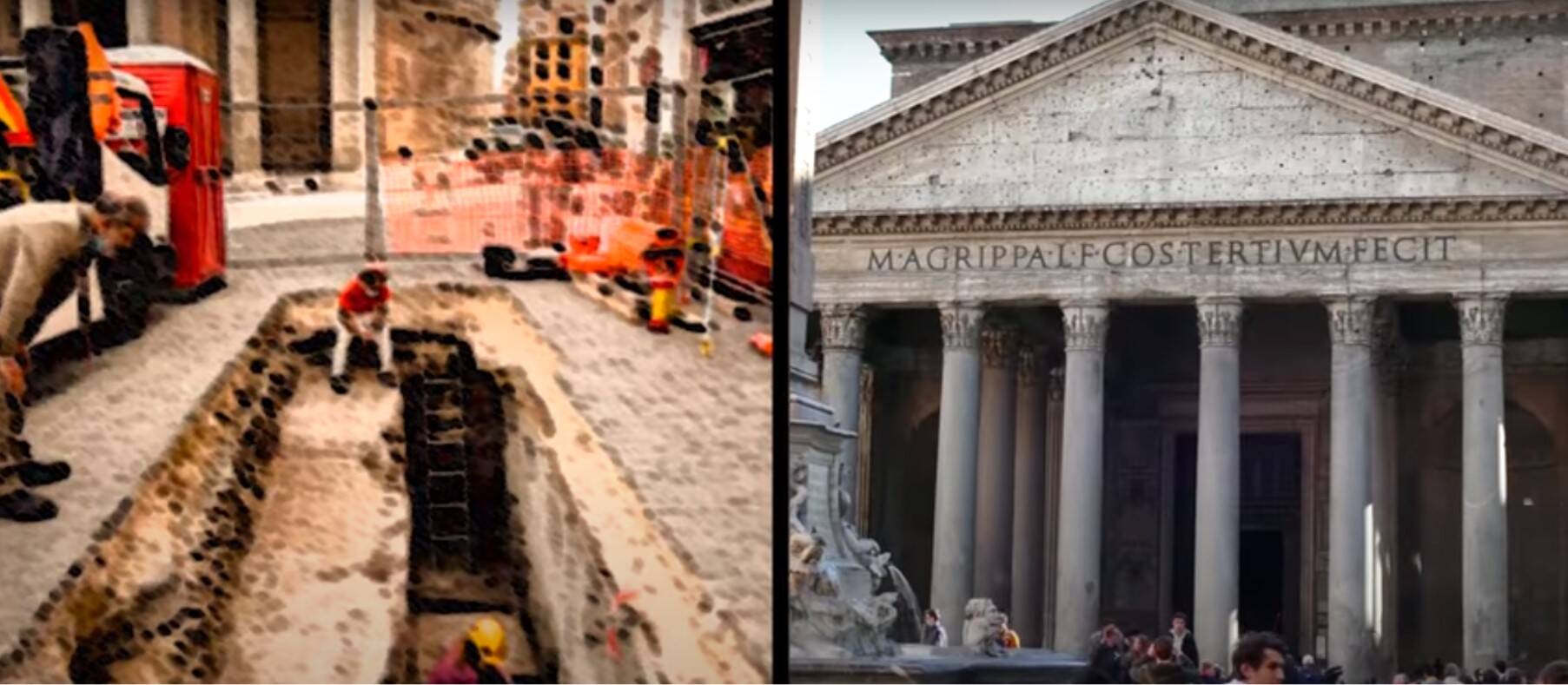
Source: Origins Explained/YouTube
Before repairing and filling in the Pantheon sinkhole, archaeologists found historic artifacts right in the hole. Their discoveries became a topic of discussion on the lips of residents and visitors of Rome. The findings probably relate to the historic Pantheon building that overlooks the sinkhole.
The Pantheon Building: Anything Special?
Like the Colosseum, where gladiators fought and entertained large audiences, the Pantheon is another symbol of ancient Roman culture.

Source: Wikimedia Commons
These structures are a few of the surviving marvels of Roman history. The Pantheon is a worship center that was built over a millennium ago. The fact that the structure still stands shows how advanced ancient Rome was in art and craft.
The Pantheon Is Still Relevant Several Years After Its Construction
The Pantheon is not a site of Ancient ruins or a sensitive structure that only permits tourist visits.
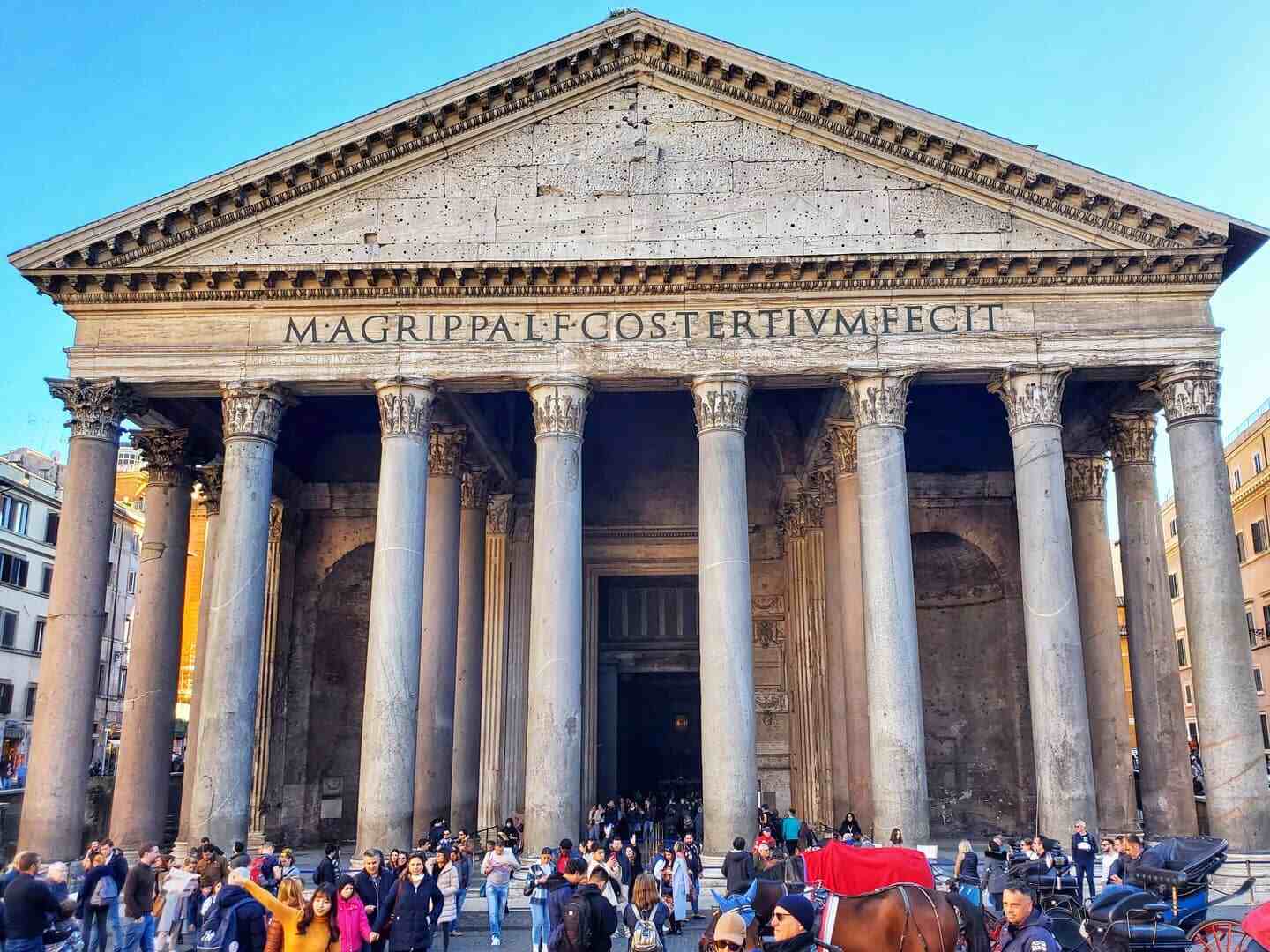
Source: Facebook
On the contrary, the Pantheon is still used for religious meetings. So, during the week, the building is open to tourists visiting the city of Rome. And on weekends, it is closed to the public to avoid distracting local worshippers.
The Meaning of the Name 'Pantheon'
The word ‘Pantheon’ has a Greek origin. It is a compound word resulting from combining two Greek words—’pan’ and ‘theos.’
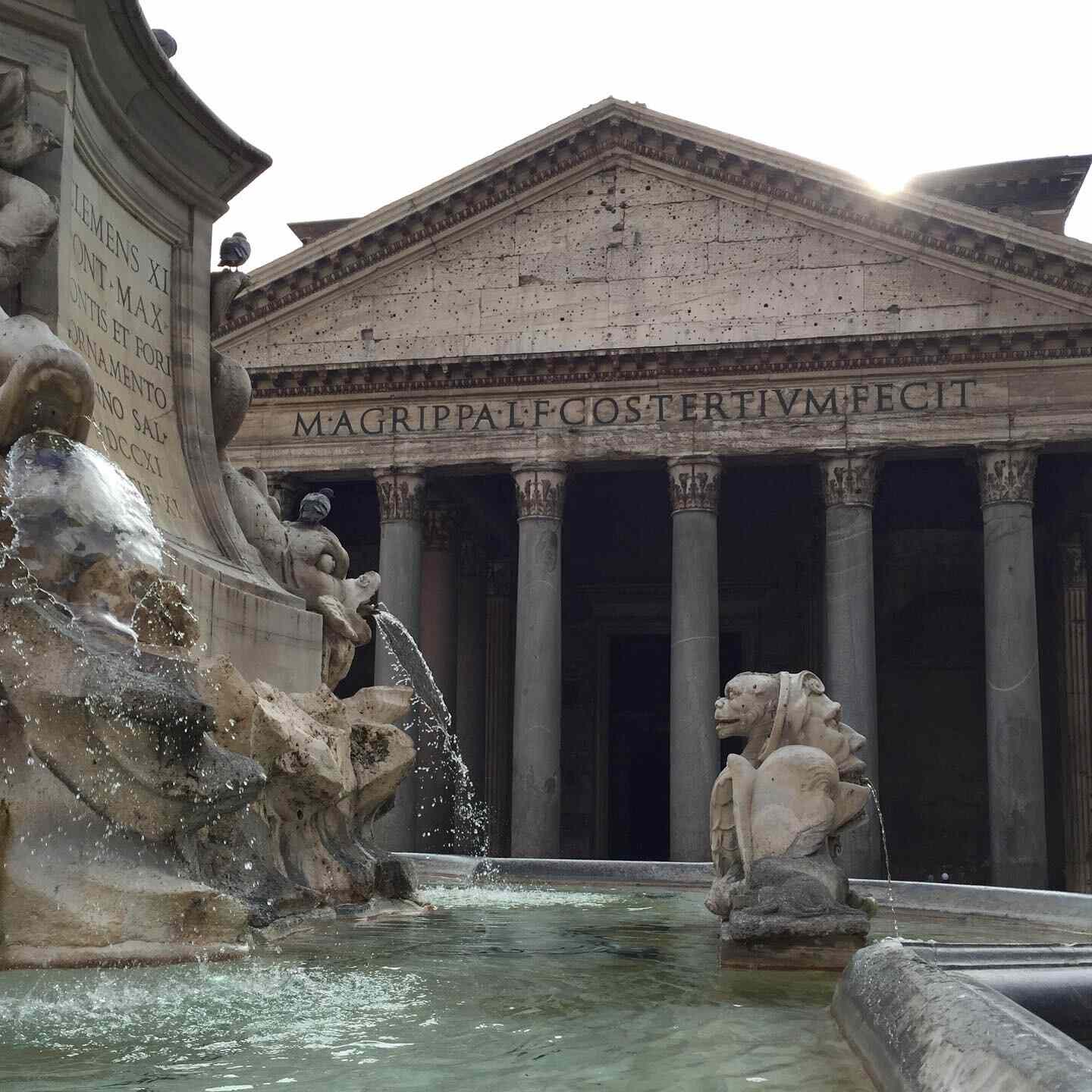
Source: Facebook
‘Pan’ means all, while ‘theos’ stands for gods. So, Pantheon interprets as a place for the worship of all gods. Therefore, by implication, the Pantheon was a worship place for the gods of ancient Rome.
A Worship Center For Several Centuries
From Zeus to Artemis, Eros, Pseidon, and all the other Roman gods, the Pantheon was built as a front to unite worshippers.
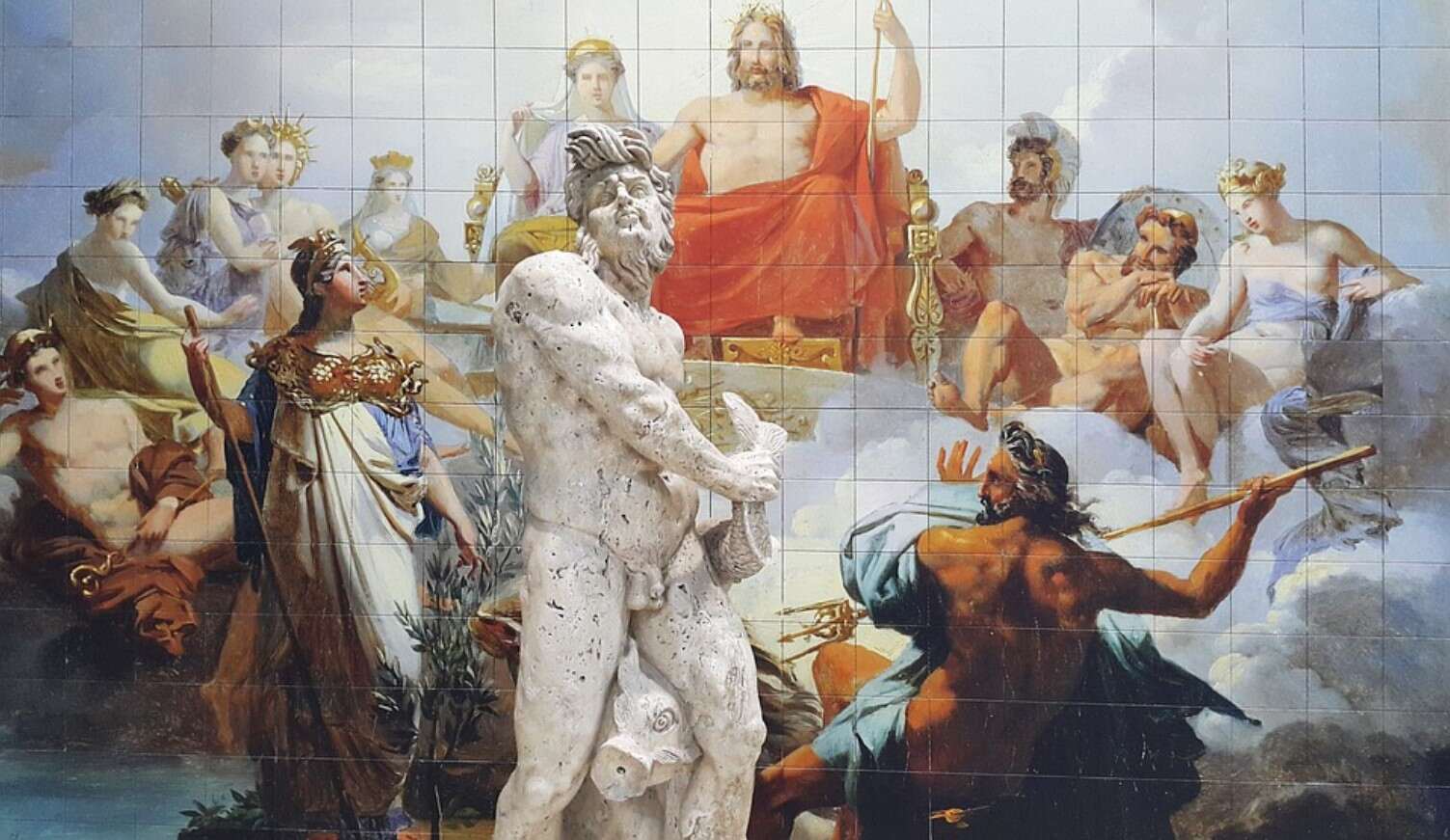
Source: Max Pixel
However, the building is now used as a church. Just like the faculty buildings of some Ivy League Universities, the Pantheon has changed hands and, with time, purpose.
How the Pantheon Came Into Being
The Pantheon is the brainchild of Marcus Agrippa, the son-in-law of the famous Roman Emperor Augustus. The building was first built in 25 BC in honor of Emperor Augustus.

Source: Facebook
Agrippa was a Roman General and statesman when he built the Pantheon. So, no one can tell if he was courting Augustus’ favor or if he merely intended to honor his father-in-law.
Woes Upon Woes To Those Who Live Long
Due to the long existence of the Pantheon structure, several troubles have befallen it. First, it was destroyed by fire around 75 AD and remained in ruins until Minitian became emperor of Rome.

Source: Picryl
Emperor Minitian ruled Rome between 81 and 96 AD and was mindful enough to have the Pantheon reconstructed during his reign. But unfortunately, the reconstructed structure was again left in disrepair after it got struck by lightning in 110 AD.
The Gods Should Be Blamed
After the short intervals of disaster in the Pantheon, worshippers began to speculate that the gods were angry. So, they became lax about having the building reconstructed.
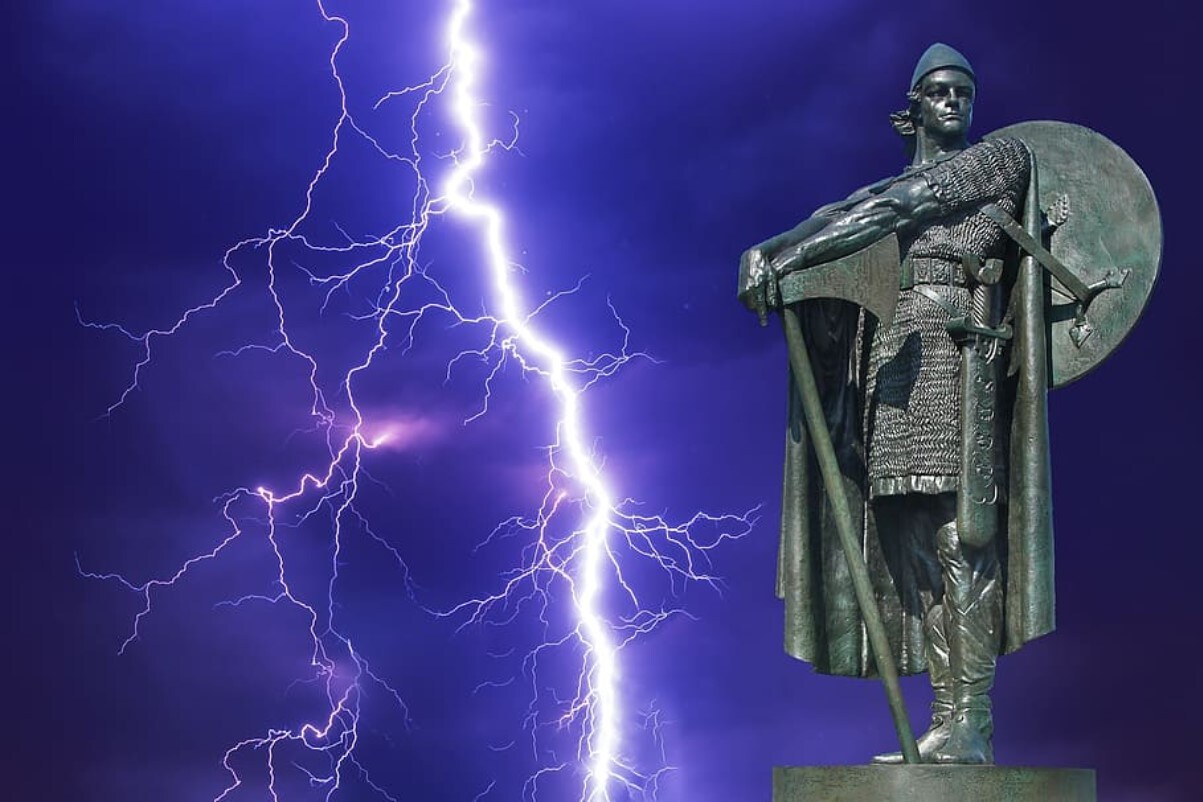
Source: Pxfuel
However, when Emperor Hadrian came to power in 117 AD, he saw to it that the Pantheon was rebuilt. Hadrian was a lover of architecture and its artistic splendor. Besides the Pantheon, Hadrian constructed and renovated several public structures in and around Rome.
Giving Credence to the Builders of the Pantheon
The Pantheon of today, which tourists flock to for its artistic beauty, was constructed by Hadrian between 126 – 128 AD.
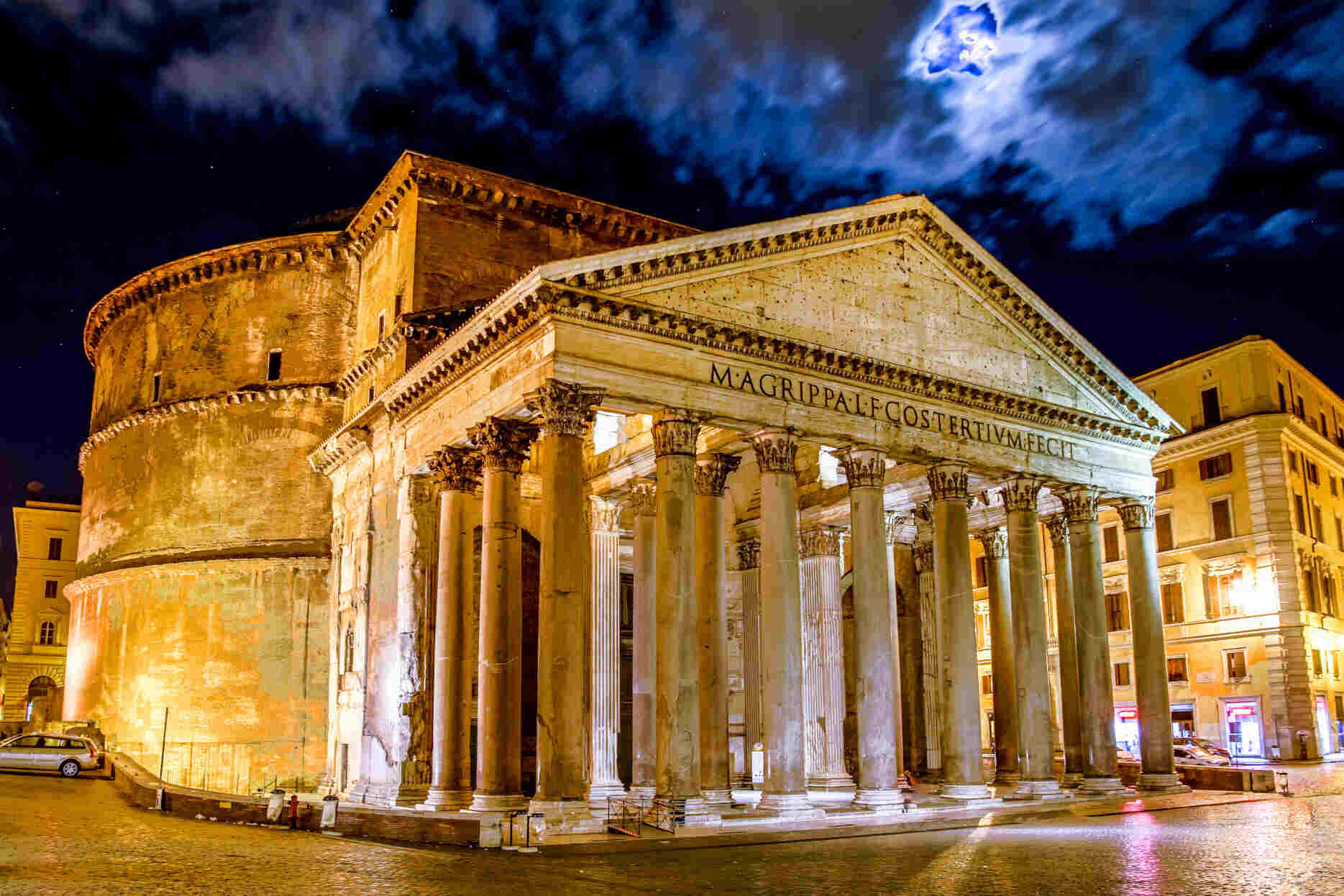
Source: Twitter
To acknowledge its original builders, Hadrian added a description outside the portico of the building. The description is still visible today and reads: “M.AGRIPPA.L.F.COS.TERTIVM.FECIT
That’s Greek for: “Marcus Agrippa, the son of Lucius, three times Consul, made this.”
Yet Another Woe of Disrepair
Historians believe that the collapse of the Roman Empire began in 330 AD. That year, Emperor Constantine moved the capital of the Roman Empire 850 miles East of Rome.
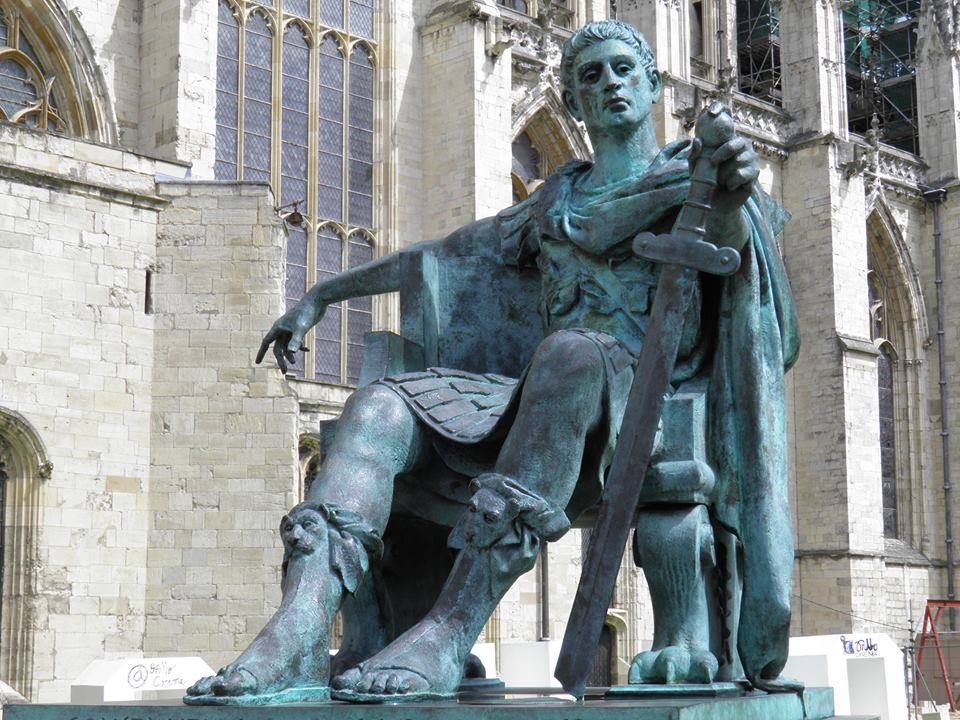
Source: Twitter
This change did not favor the Pantheon, as the building began to suffer disuse. It wasn’t until 609 AD before anyone thought it necessary to put the Pantheon in order. That year, Pope Boniface IV asked Emperor Phocas’ permission to renovate the Pantheon.
The Church of St. Mary and the Martyrs
Pope Boniface IV was not going to renovate the Pantheon for free. He asked the emperor to be allowed to convert the structure for use by the Catholic church.
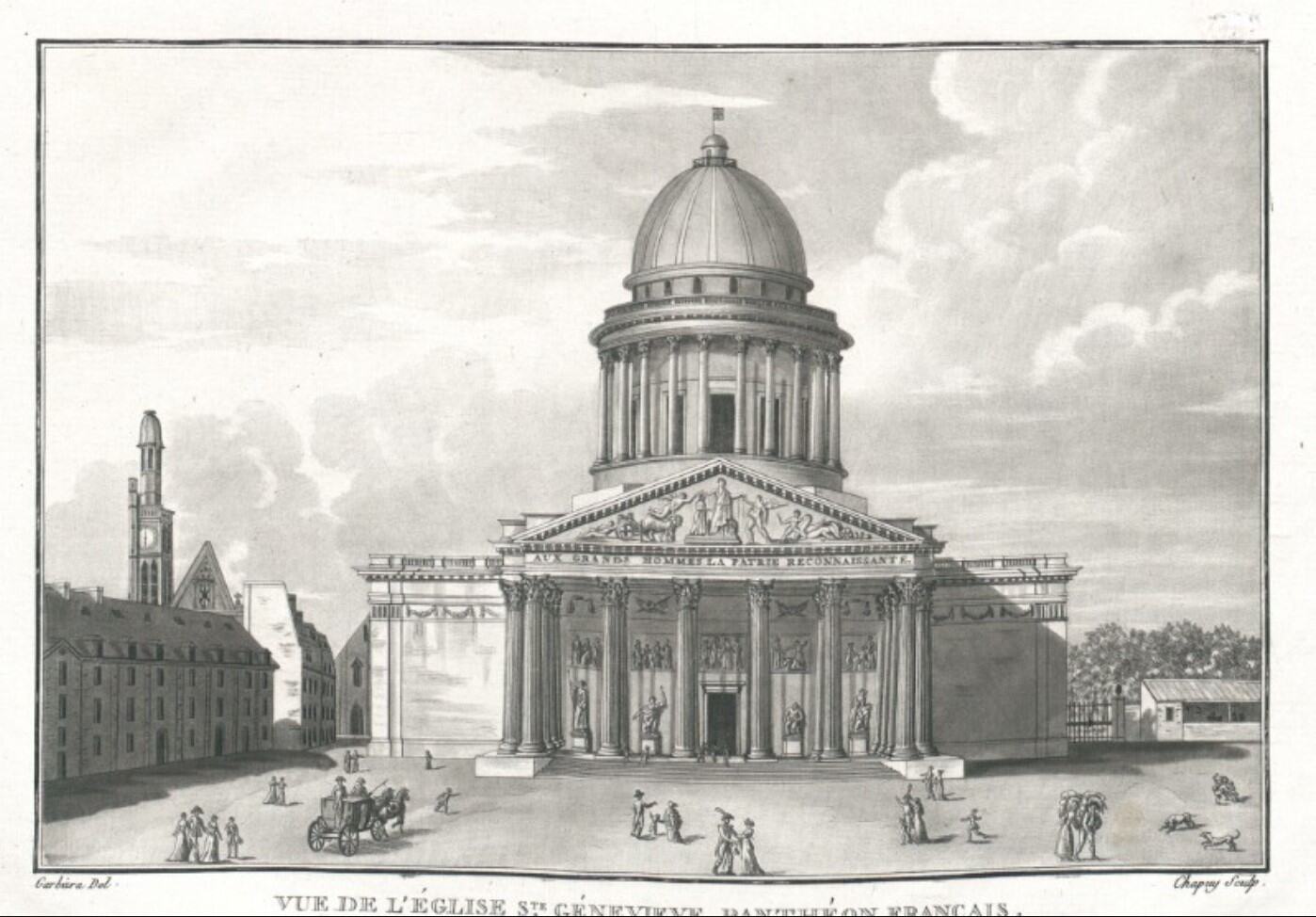
Source: Picryl
After some back and forth, Phocas agreed to the pope’s request. Pope Boniface IV named the church to be housed in the Pantheon “The Church of St. Mary and the Martyrs.”
Diligent Upkeep By the Catholic Church
You can tell a stray dog by its untidiness. After the Pantheon came into the possession of the catholic church, a lot of facelifting was done to the structure.
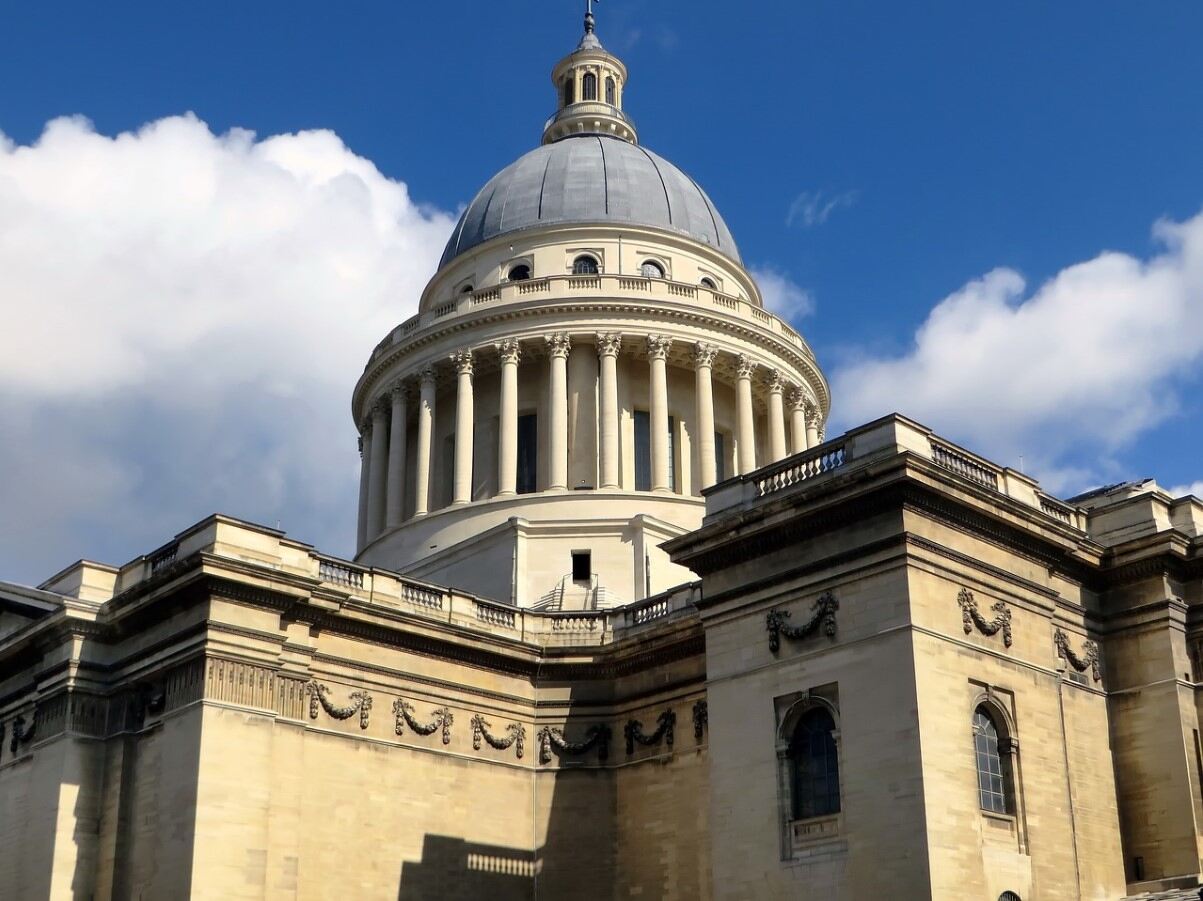
Source: Needpix
With resources made available by the Pope, the crumbling parts of the Pantheon were reinforced. For example, the renovators retained the building design but improved some columns, pillars, and even the roof with concrete and bricks.
The Most Captivating Part of the Pantheon is the Roof
Its dome-shaped roof is the main center of attraction for tourists visiting the Pantheon, which is truly a spectacle to behold. This magnificent dome arcs over the main hall of the Pantheon without the support of columns or pillars.
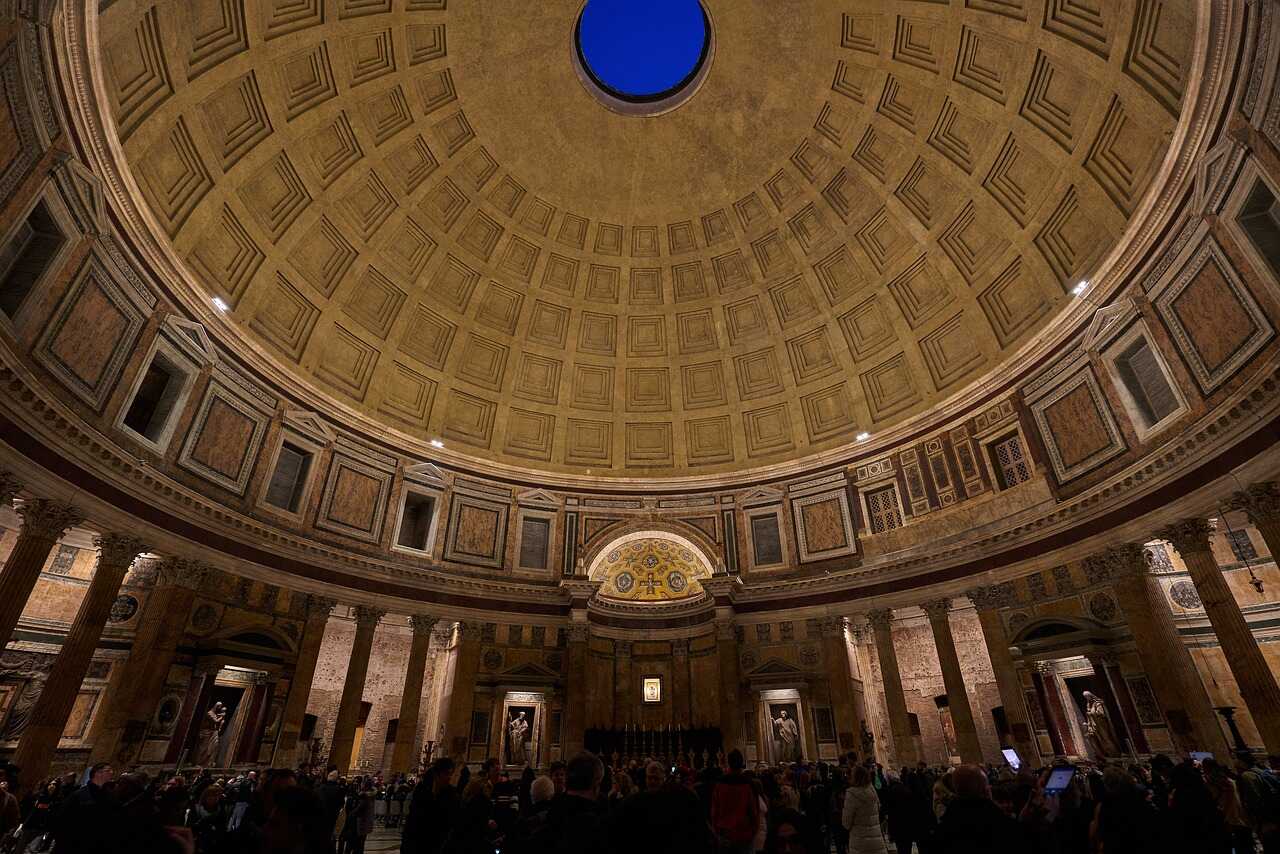
Source: Pxfuel
It has been named the largest copula in the world and is the largest roof design made of concrete with no reinforcement.
Who Intentionally Leaves a Hole in Their Roof?
Another interesting feature of the Pantheon is an 8.7 meters circular opening at the very center of the concrete dome. Historians have established the purpose of this intentional opening in the Pantheon’s roof.

Source: Twitter
The original design included the hole to help early worshippers have direct access to their gods. While this may sound contradictory, modern architects have found that the oculus structurally strengthens the roof.
A World-Renowned Artist Assesses the Pantheon
The Pantheon’s design has inspired several modern buildings and structures worldwide. For example, the capitol buildings of several States in the US, and even the seat of the US Senate, borrow some features from the Pantheon.
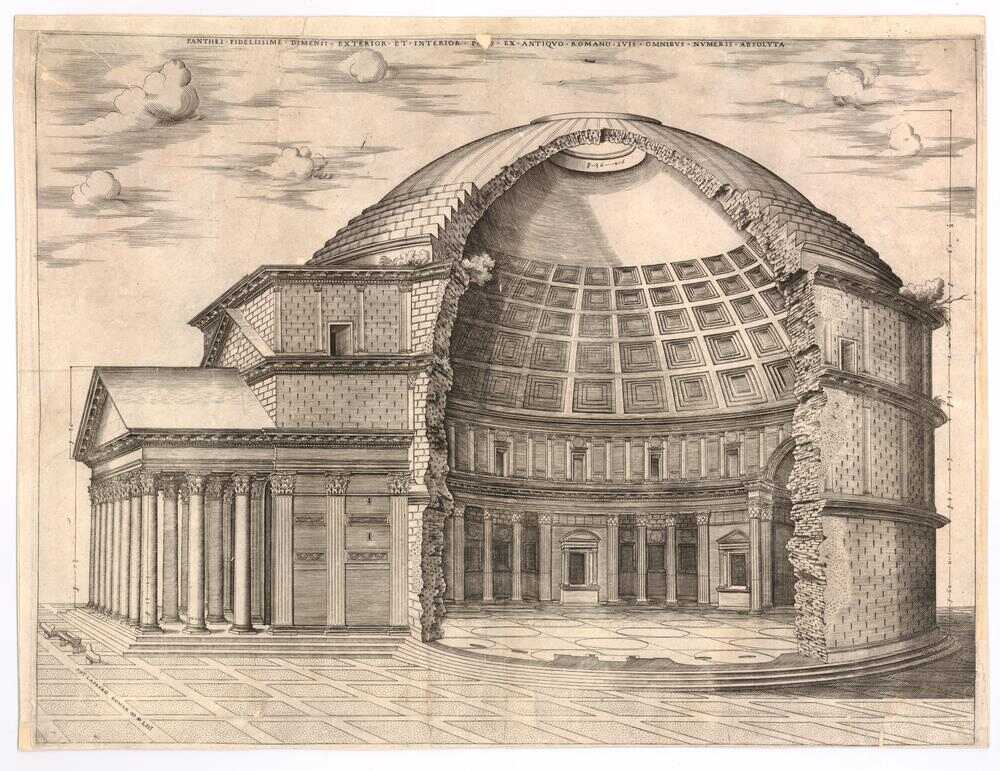
Source: Picryl
After considering the many artistic features of the Pantheon, Michelangelo commented that the building’s design was divinely inspired. He commended the symmetry and perfection of the Pantheon’s design.
A Gravesite for Famous People
Orthodox churches are notorious for having gravesites around their church buildings. Since being converted for use by the Catholic church, the Pantheon has taken on an extra purpose. Crypts have been built inside the church building for the burial of notable individuals.
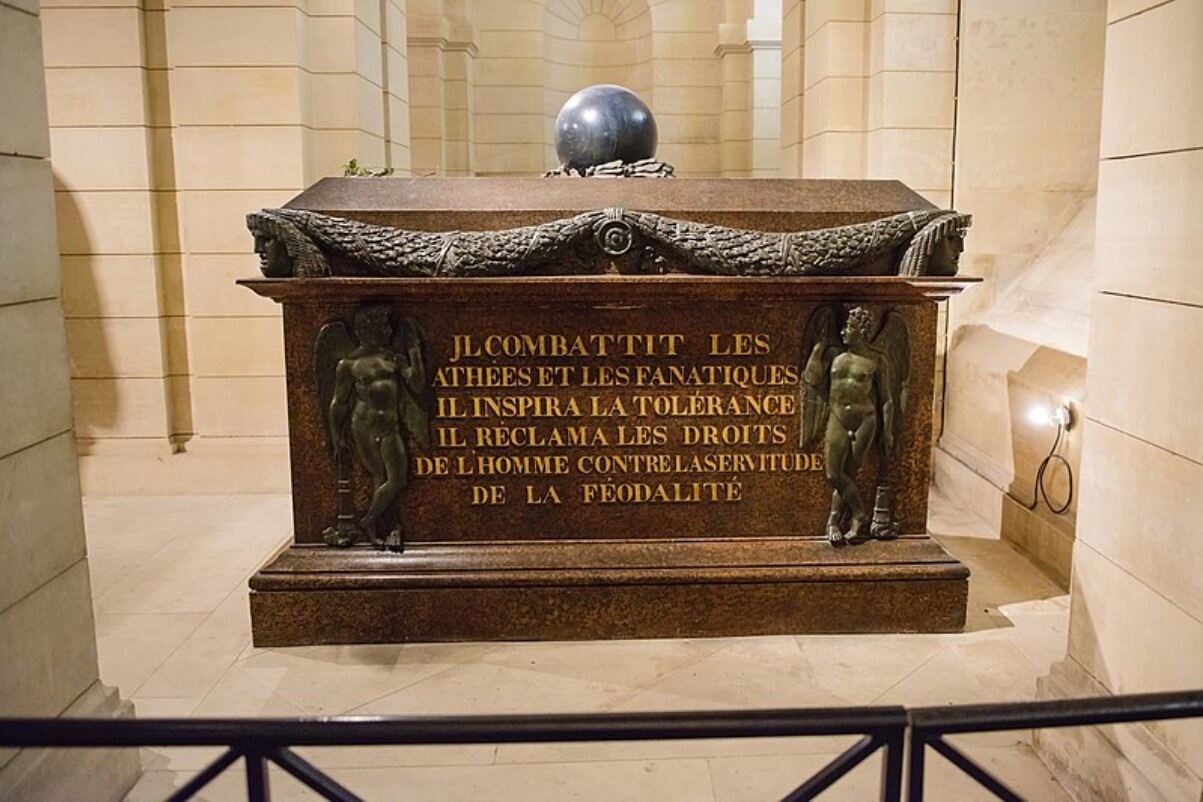
Source: Wikimedia Commons
For example, some Christian Italian monarchs were buried in the Pantheon. The famous painter, Raphael, was also buried in one of the Pantheon’s crypts.
The Importance of Archeological Research in Rome
The history of the Pantheon provides a backstory for the richness of ancient Roman culture. Also, the vast heritage of Rome explains why archeologists jump at any sight of a sinkhole in the city.
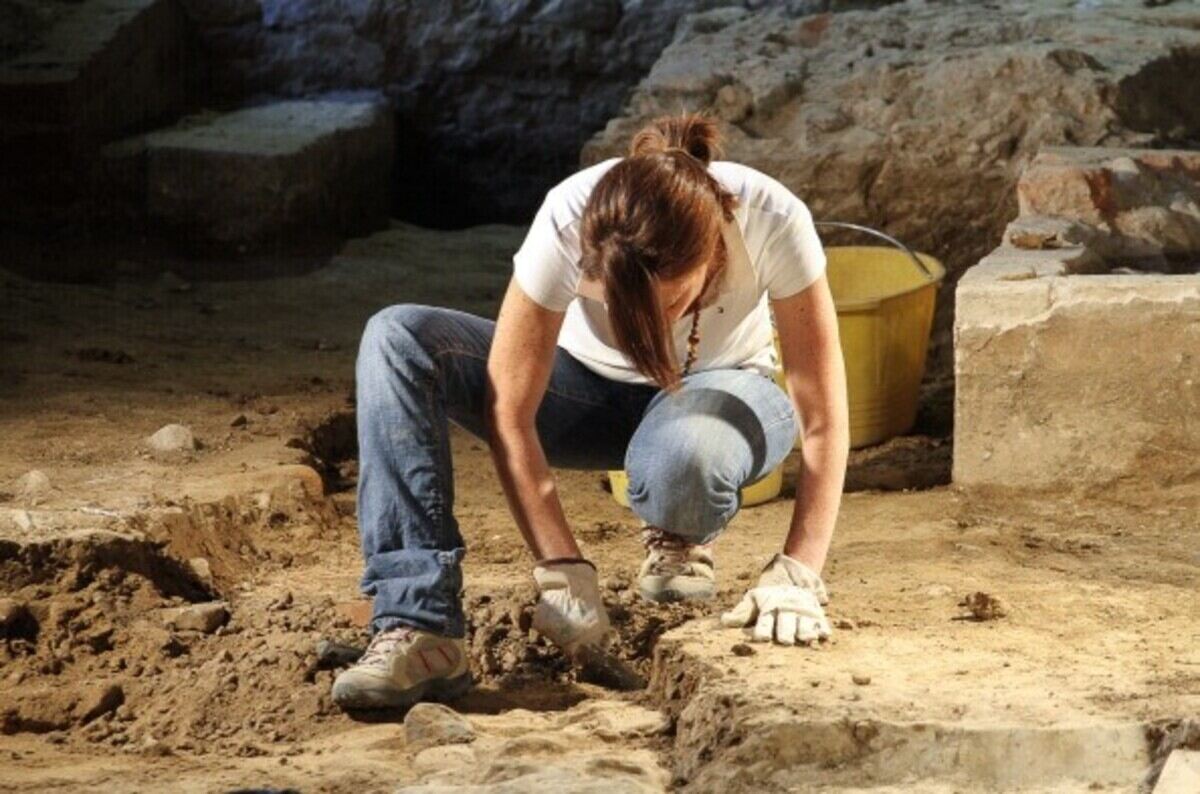
Source: Twitter
So, when a sinkhole opened up right in front of the Pantheon, archeologists from ANSA took it upon themselves to investigate what lies within.
They Found Very Old Stones
Upon descending into the Pantheon sinkhole, archaeologists found paving stones as old as the building itself. When the stones were taken to the lab for dating, they were found to be from around 25 and 27 BC.

Source: Twitter
As mentioned earlier, Marcus Agrippa built the first Pantheon structure in 25 BC. So, historians think it safe to assume that the discovered stones are from the very first construction of the Pantheon.
How the Ancient Stones Got Buried
After the first Pantheon structure by Agrippa burned down, Emperor Hadrian had it rebuilt around 200 AD. Since the new building was constructed on the same site, the surrounding piazza was also repaired.

Source: YouTube
This probably explains why the cobblestones used for the first piazza got buried underground. Interestingly, this would not be the first time that those stones were unearthed.
Technological Innovations and Architectural Revival
Around 1990, improvements in telecommunication and power transmission technologies necessitated laying service cables around Rome. So, some of the ancient stones were discovered during the excavations involved in the cable laying.
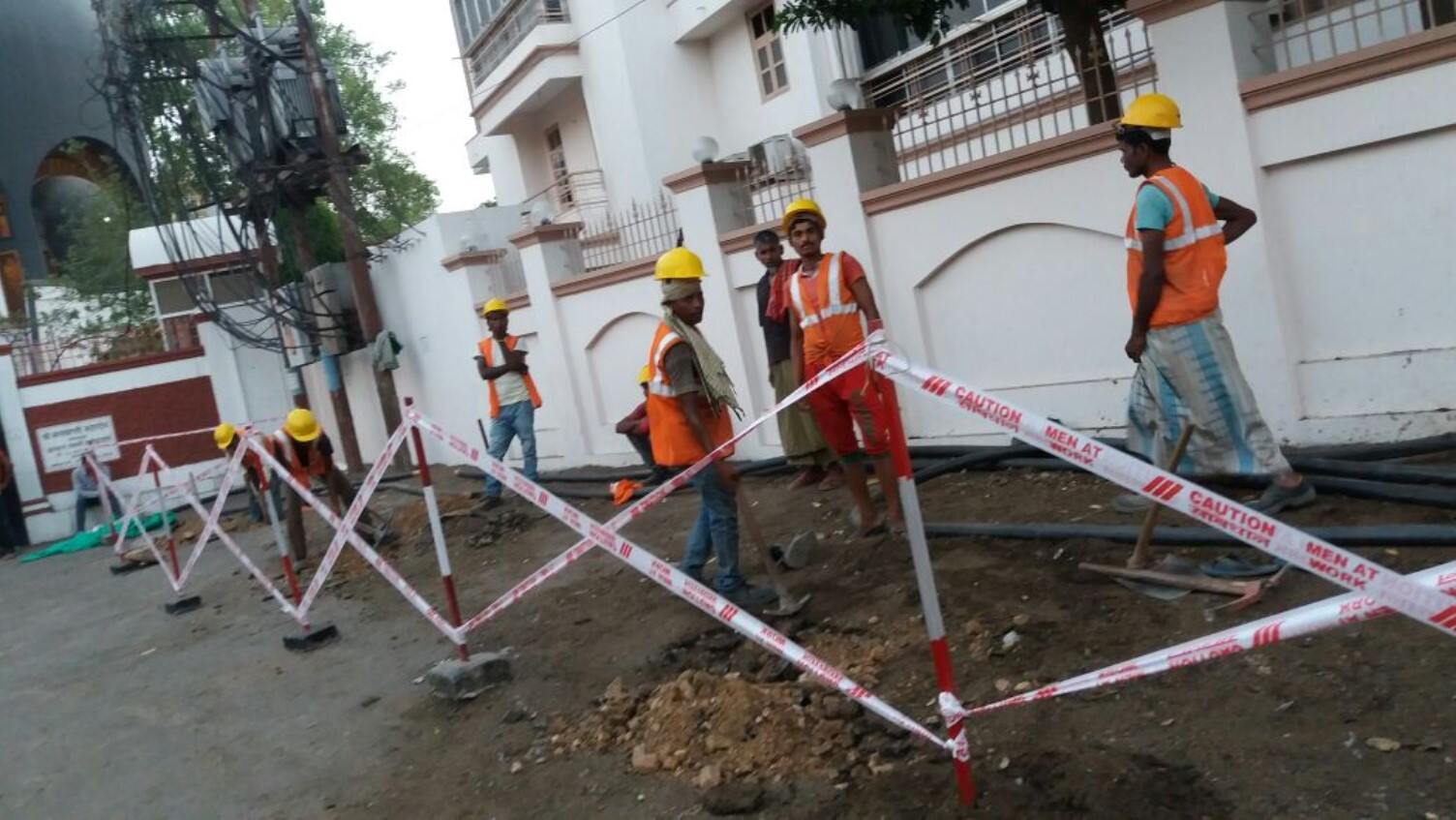
Source: Wikimedia Commons
However, the stones were reburied and overlaid with mortar, as the workers apparently did not understand the cultural significance of these stones. But luckily, the mortar did help protect the stones.
Saved by the Pozzolan
After the recent discovery of the ancient stones, a press conference was held to inform the public about the find. The superintendent of Rome, Daniela Porro, made it known that those stones would have been lost without the mortar.

Source: Twitter
The local mortar in question is called pozzolan, which behaves like cement when wet. It is responsible for providing a protective layer for the ancient stones.
A Favorable Disaster
Sinkholes are occurrences that cause damage to roads, buildings, and other public facilities. While the government of Rome is glad about the discovery of ancient stones, they are also working to reduce the losses and dangers that sinkholes can bring.
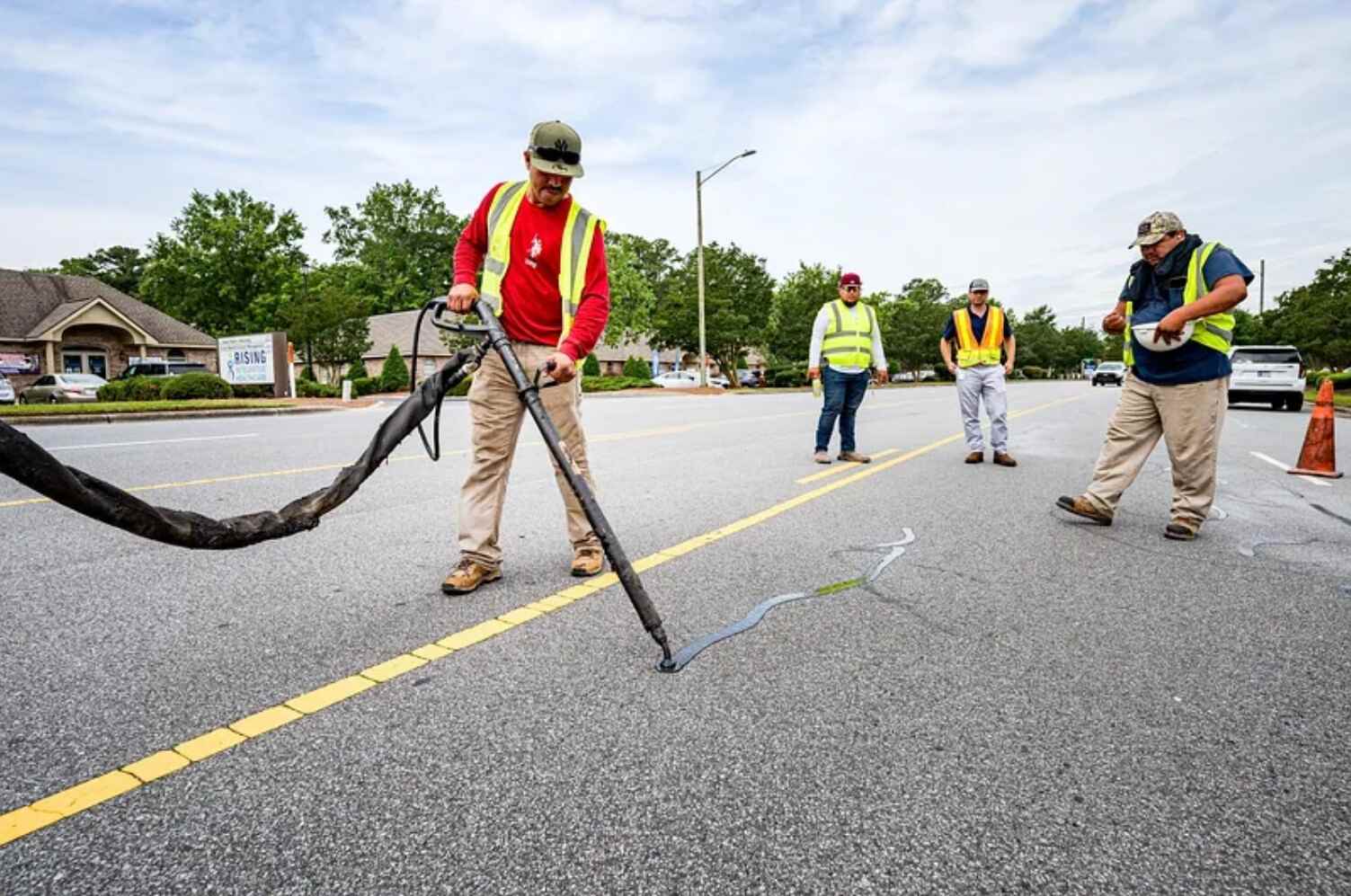
Source: Rawpixel
So, the Mayor of Rome has initiated a $20.5 million initiative to repair potholes before they grow into large sinkholes. Hopefully, this will prevent future occurrences of sinkholes in public facilities.
Bureaucratic Delays to Policy Implementation
While the plan to combat sinkholes in Rome has been approved and initiated, it has experienced several months of setbacks and delays. Still, some of the roads are sometimes unsafe to drive on, and tourists are being cautioned about visiting certain parts of the city.
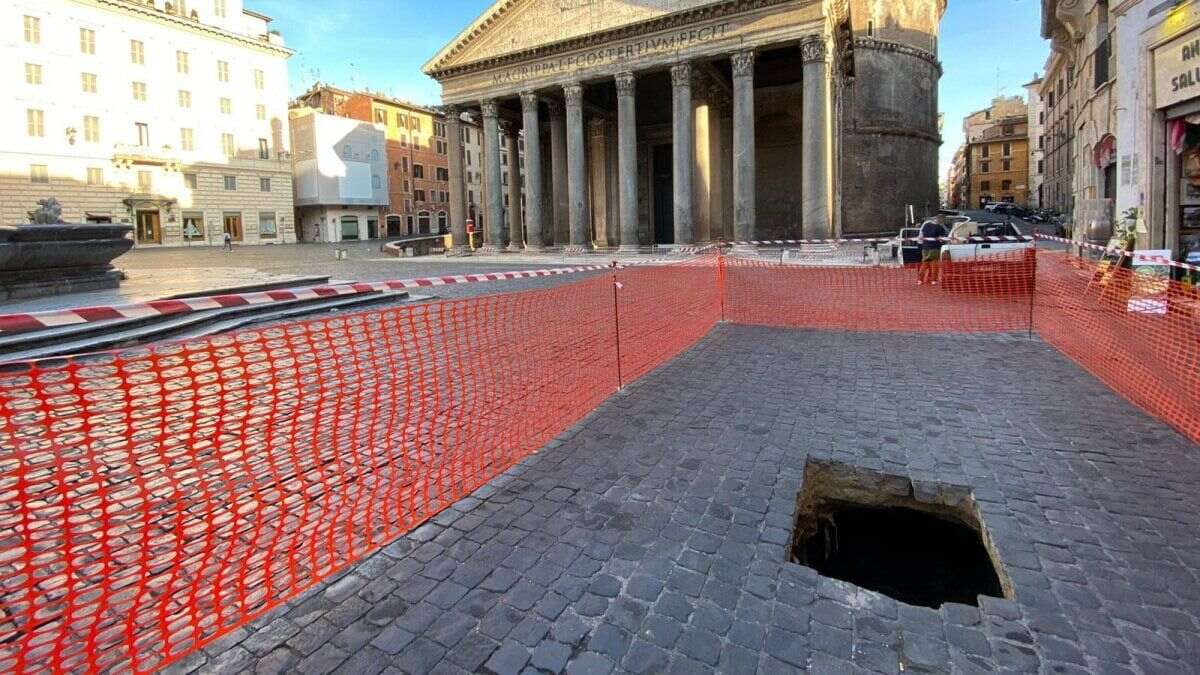
Source: Twitter
Another sinkhole has just appeared close to a popular tourist attraction—the Colosseum. One can only imagine what historical treasures archeologists will discover there!
